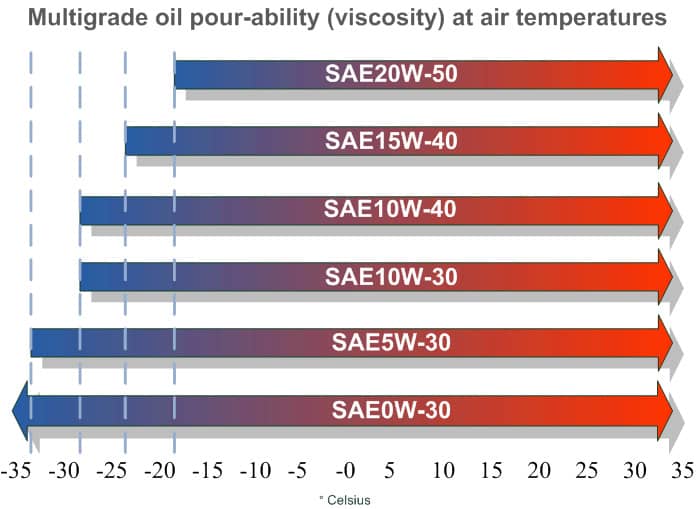
The generator engine cannot function without oil. Oil is used in an internal combustion engine to reduce friction between moving parts and facilitate the combustion process. The oil’s protective layer acts as a buffer between the moving parts, preventing them from coming into contact with one another.
Particles can accumulate in an engine, but oil can clean it up. It prevents engine components from rusting. Because of its role in facilitating the free movement of engine components, it also helps maintain the engine’s temperature. Changing oil of the generator is one of the important steps in generator maintenance.
What Kind of Oil Does a Generator Use?
What Like replacing the oil in your car, your generator’s oil should be checked and replaced every 100 to 200 hours of use. Your generator’s engine will last longer if you do this. If you don’t run your generator very often, you should start it and let it run for ten to fifteen minutes once a month. This lets the oil maintain moving parts clean and lubricated even while the machine is not in use.
Before you go out and get oil for the generator, but before they do, you should consult the owner’s manual to see what kind of oil should be used.
Many oil containers will have the letters “SAE,” which stand for the Society of Automotive Engineers and indicate the oil’s classification. In 1916, it was formally founded to serve as the source of engineering standards for the rapidly expanding automobile industry. This comprises the current global standards for oil and gasoline.
The thickness of oil, measured in terms of its viscosity. When the temperature outside is low, engine starting is simplified by oil that is thinner than usual. If you want to keep your engine safe in the heat, you’ll need oil of a heavier weight.
There are a few considerations to make when deciding which oil is ideal for your generator engine. One is the oil’s viscosity, or how fluid it is under load. When the first number is lower, the oil is thinner and better suited to cooler temperatures.
A “W” indicates that it is winter. After the “W” in the specification, the thickness of the oil is specified at the engine’s typical operating temperature.
Outdoor temperature is another consideration. Thinner oil is needed for use in colder temperatures. In warmer temperatures, engine components benefit from oil with a higher viscosity.
Oil comes in a variety of forms as well. All three types of oil—single grade, multigrade, and synthetic—are readily available in retail outlets.
Oils of a single grade, or monograde, are those of a single viscosity grade, such as SAE 30 or SAE 40. Which grade of oil is best for your generator depends on the ambient temperature and how often you use it. Manufacturers of internal combustion engines typically specify operating viscosities. Oil should be used as directed in the generator’s manual.
In most cases, a Viscosity Index Improver is added to multigrade oils to make them more compatible with different engine types. Multigrade oils have varying degrees of fluidity depending on the temperature.
When temperatures rise and oil viscosity must increase, the additive kicks in. Multigrade oils can range from 5W-30 to 10W-30 and beyond. For instance, Honda’s generators utilize 10W-30 oil.
Refined crude oil serves as the substrate for synthetic oil, which is further refined with man-made chemical compounds. This type of oil has less impurities than regular motor oil or other types of motor oils.
This keeps the engine clean and free of sludge and other contaminants. While synthetic oil is more expensive than single or multigrade oils, it is built to last significantly longer.
Important maintenance elements should be taken into account if you want your generator to last for many years of use. Keep track of the time spent running in order to perform oil changes at the appropriate intervals. Between 100 and 200 hours of use, most generators require an oil change.
Consider this whether you’re using a single grade of oil or a blend. All oils of this type naturally include trace amounts of impurities that accelerate the oil’s breakdown with time. The oil’s ability to remove contaminants from engine parts means that it eventually becomes contaminated itself.
The United States use eleven different viscosity grades, from 0W to 30W. These are commonly known as oil weights. In the list below, you’ll see the most common ones and their temperature range.

Frequently Asked Questions
What Type of Oil Do You Put in A Gasoline Generator?
Oil specifications for your generator engine can be found in the owner’s handbook. Oil is used in gasoline engines because it lubricates, cools, and cleans the interior components. How well the oil works depends on how hot or cold it is outside.
This depends on the oil’s viscosity rate, or how easily it flows at different temperatures. Oils are rated according to their performance across a wide range of temperatures, and these ratings can be seen on the oil’s label.
To give just one example, a 10W-30 oil is suitable for use between -20- and 96-degrees Fahrenheit.
Is It Ok to Use 5w30 Oil in My Generator?
Oil with a 5W-30 rating is fine to use if you live in a cooler region. The cooler the temperature, the better performance of this oil. But if you plan on using the generator in warmer weather, a 10W or 15W will serve you better. To make a cold start less taxing on the engine, oil with a lower initial number is preferable.
Can I Use SEA 30 in My Generator in Place of 10w30?
You may also hear people refer to SAE 30 oil as “single” or “monograde” oil. These are commonly seen in lawnmowers and other seasonal engines. When the engine is working at a typical temperature, the oil has a thickness (viscosity) of 30. For information on the ideal oil grade for your generator, consult the manual that came with your unit.
When Do I Need to Change the Oil in My Generator?
The owner’s manual will tell you how often you should change the oil in your generator. Between 100 and 200 hours of use per week is suggested. You must adhere to the guidelines in order to clear the engine of any accumulated sludge or debris. Due to its degradation and reduced lubricating capacity, dirty oil can be harmful to the engine.
Can I Change the Oil in My Generator to Synthetic Oil?
In general, yes, though you should always check your owner’s handbook for specific instructions. Synthetic oils are meant to benefit engines and are thinner thanks to man-made chemical additions. If your generator’s manual specifies that synthetic oil be used, switching to single or multigrade oil could be disastrous.
What Kind of Oil Is Used in A Honda Generator?
Honda generators typically call for the most widely-available oil weight, 10W-30. Honda’s generator manual or website will have instructions on how to change the engine oil. Because of the correlation between oil and friction, it is critical to use the correct oil type, as using the wrong oil for the season can cause harm to the engine.
How Much Oil Is Required for A Honda Generator?
The amount of oil required for your Honda generator will vary slightly according to the size of its engine. Bigger engines require more oil. Fewer gallons of oil are required for smaller engines.
The Honda E2000, for instance, needs only 0.42 quart, whereas the ES6500 needs 1.5 quart. If you want to know more about your Honda generator, it’s best to check the manual or the official website of the company.
Does Anyone Know What Kind of Oil Works Best in A Honda Eu2200i Generator?
The good news is that all Honda generators have the same oil weight guideline of 10W-30. This is the most often used weight oil for engines, and it has a wide outdoor average temperature range, making it suitable for usage from Spring to Fall in most regions. It is also okay to use synthetic oil after the first several hours of operation with regular oil.
Can 5w-30 Oil Be Used in A Honda Generator?
The lower initial number suggests a thinner oil suitable for colder weather, therefore a 5W-30 oil would be used only in colder climates. As the weather warms up, you can change to something heavier, like 10W-30.
Is Oil Included with The Honda Generator?
Honda’s new generators don’t come with oil pre-installed to avoid any potential damage to the engine during shipping. Oil must be purchased, and the reservoir must be filled, before the engine is turned on.
Whenever in doubt, check the manufacturer’s website for instructions or consult the handbook.
Will Synthetic Oil Damage My Honda Generator?
The Honda generator can utilize synthetic oil, although for the first few hours of use, a 10W-30 oil should be used. Once the oil has been drained, you can swap it out for a synthetic alternative. You may safely use synthetic oil in your Honda generator, and it’s a great value. Changing from conventional to synthetic oil is safe for the engine.
Always refer to your generator’s operator’s manual or manufacturer’s website for maintenance and safety tips.
Read Next:
- Solar Generator vs Gasoline Generator – What’s Best?
- 6 Low THD Generators [< 5% Total Harmonic Distortion]
- Overheating Generator [causes and Solution]
- What Causes a Generator to Surge? Is It Normal?
